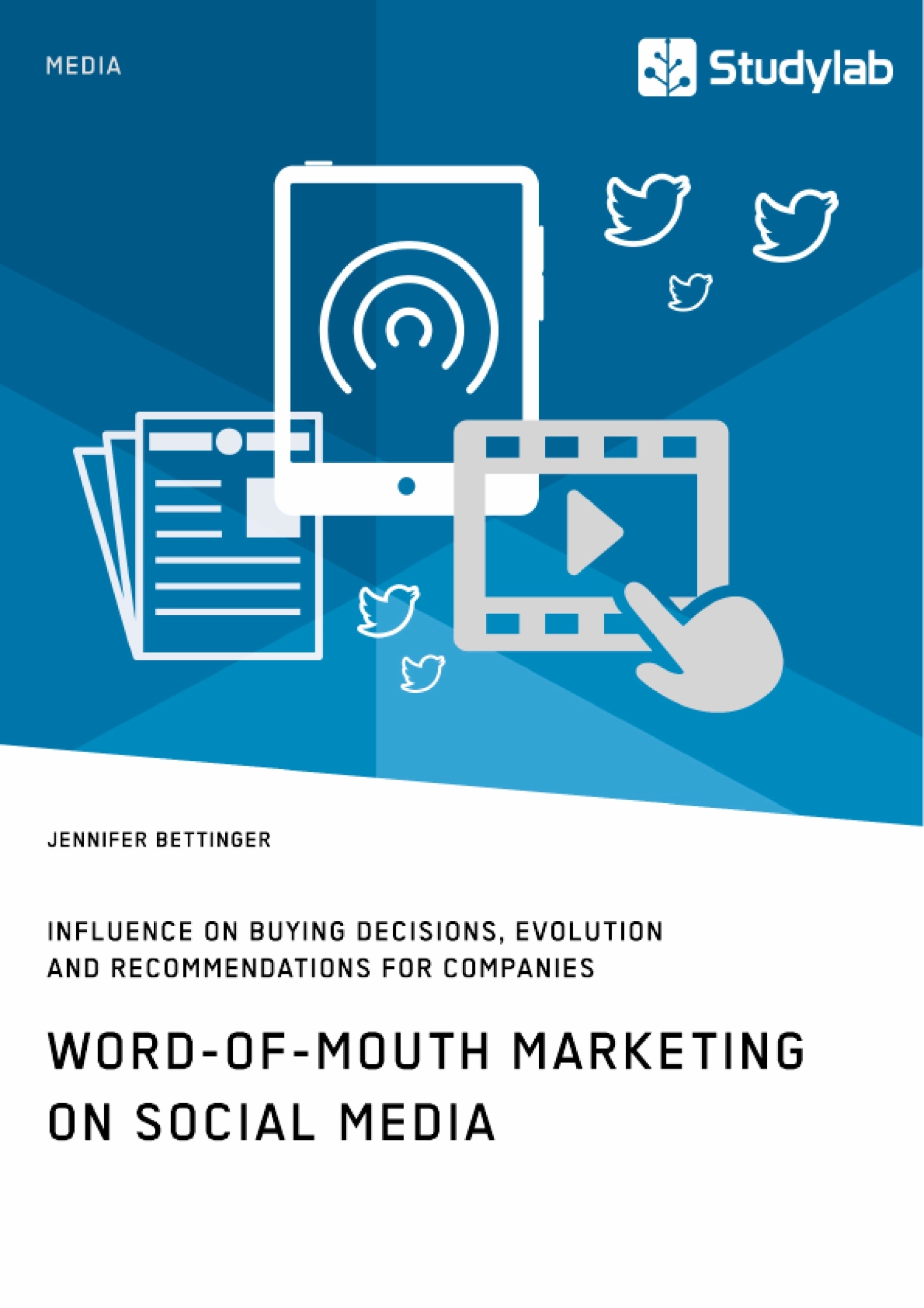Marketing has changed. Imagine yourself standing in a shoe store looking for a new pair of sneakers. Which ones will you buy? Those you have seen once or twice in a TV commercial? Or those which your friends wear and recommend? Despite the effects of commercials the “word-of-mouth” from trusted persons has an outstanding effect on our decisions. Especially the influence of social media and its correlation with the so-called word-of-mouth-marketing had caused a certain movement in marketing.
In her new book Jennifer Bettinger sheds a light on this phenomenon. She shows how word-of-mouth can have a far-reaching impact and presents a structured overview on the evolution of traditional marketing up to today’s social media marketing. She analyses modern and old marketing techniques and conducts two expert interviews.
Keywords:
- marketing;
- word-of-mouth;
- social media;
- WOM;
- Facebook;
- Instagram
Inhaltsverzeichnis (Table of Contents)
- Introduction: The Secret Ingredient to Reducing Consumer Risk
- The Evolution of Traditional Marketing and Advertisement
- Marketing Throughout the Years
- Traditional Word of Mouth Marketing
- From Paper to Screen – The Web and Its Impact on Marketing
- The Developmental Stages of the Internet
- The Web-Caused Changes to Society and Marketing
- The Development Stages of Modern Marketing Before and After the Web
- Marketing in 2017
- Social Media - An Overview
- Social Media Platforms Defined and Compared
- Marketing on Social Media
- E-Word of Mouth Marketing: Status Quo and Success factors
- Electronic Word of Mouth Marketing on Social Media
- Word of Mouth's Most Promising Trend: Influencer Marketing
- Key Takeaways, Recommendations and Future Outlook
Zielsetzung und Themenschwerpunkte (Objectives and Key Themes)
This bachelor thesis aims to define the origins of electronic Word-of-Mouth Marketing and analyze its current status. It provides an overview of the evolution of traditional marketing up to today's social media marketing. The term Word-of-Mouth will be further analyzed in the context of the various development stages of marketing. Based on this analysis, the current state of Word-of-Mouth Marketing will be discussed with reference to literature, statistics, and regulations. The thesis concludes with recommendations for successfully implementing Word-of-Mouth Social Media Marketing into a company's marketing strategy.
- Evolution of marketing from traditional to digital
- Impact of the web on marketing
- Definition and analysis of Word-of-Mouth Marketing
- Status quo of Word-of-Mouth Marketing on social media
- Recommendations for implementing Word-of-Mouth Social Media Marketing
Zusammenfassung der Kapitel (Chapter Summaries)
The first chapter provides an introduction to the topic, highlighting the importance of reducing consumer risk. Chapter two explores the evolution of traditional marketing and advertisement, covering marketing throughout the years and the development of traditional word-of-mouth marketing. Chapter three examines the impact of the internet on marketing, discussing the developmental stages of the internet, its influence on society and marketing, and the subsequent changes in marketing strategies. Chapter four gives an overview of social media, defining and comparing various platforms and analyzing the possibilities of marketing on social media. Chapter five focuses on the current state of electronic Word-of-Mouth Marketing, exploring its presence on social media and the rising trend of influencer marketing.
Schlüsselwörter (Keywords)
Key terms and concepts explored in this thesis include traditional marketing, digital marketing, word-of-mouth marketing, social media marketing, influencer marketing, consumer risk, consumer behavior, and marketing strategy.
- Quote paper
- Jennifer Bettinger (Author), 2017, Word-of-Mouth Marketing on Social Media. Influence on Buying Decisions, Evolution and Recommendations for Companies, Munich, GRIN Verlag, https://www.grin.com/document/386928



